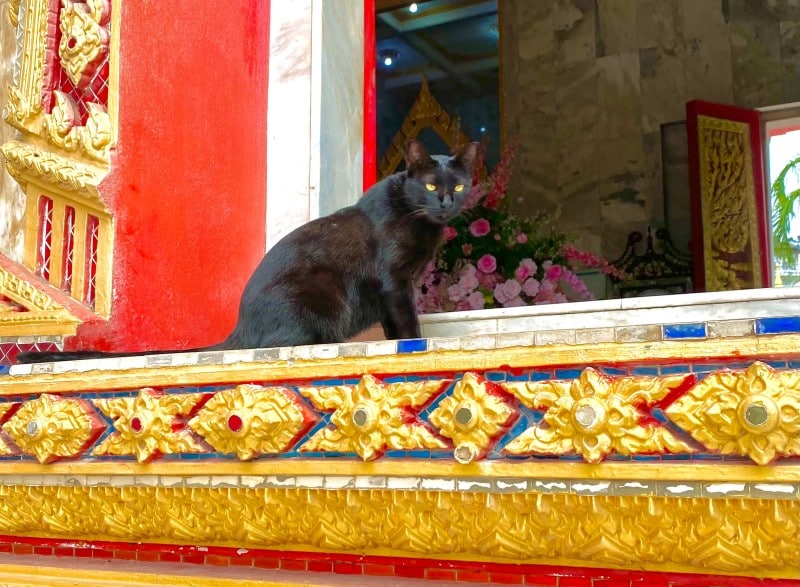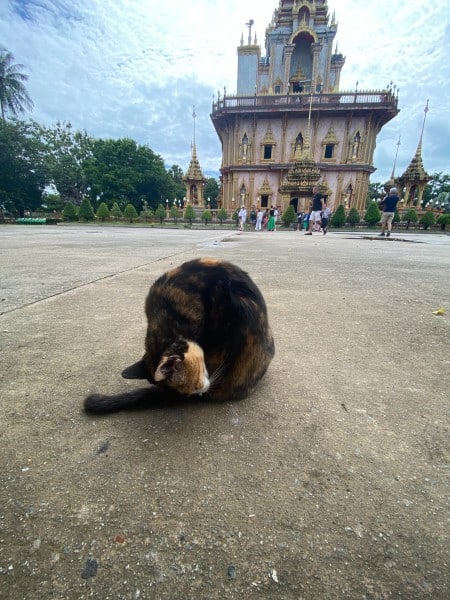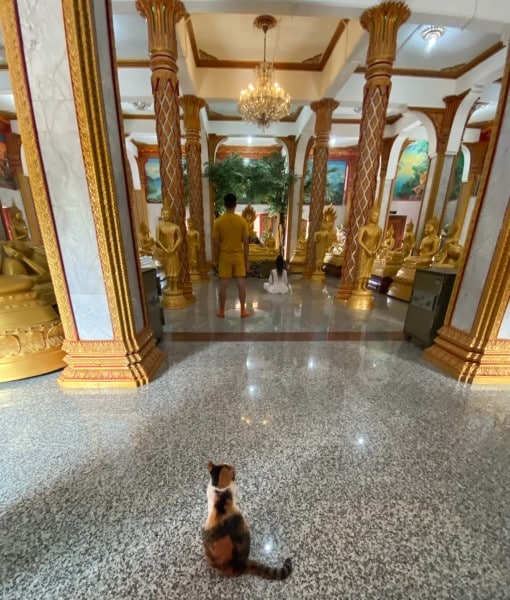- February 23, 2024
Meditation and Cats: A Reflection

The information is current and up-to-date in accordance with the latest veterinarian research.
Hi, I’m Dr. Lauren! Read my introduction to learn more about me and my two adventurous cats, Pancake and Tiller.
I have lived with several Zen masters—all of them cats.
Apocryphal stories about cats in myth, religion, and history abound. But one thing they all agree on: cats are masters at the art of zen and meditation. With a mix of zoomies, thrown in for good measure. And try at your own detriment to ignore a cat one, as even monks aren’t immune to their charm, though they may try… as shown in this endearing video of a cat trying to get a monk’s attention.
As a light-hearted look this week at the various ways in which cats help us reflect, meditate, and reflect on ourselves, let’s look at meditation and cats, from various perspectives of culture and society.

Meditation refers to various practices that focus on integrating mind and body for various purposes. Meditations can be to calm, enhance overall well-being, or enhance focus, to name a few purposes. Both religious and non-religious forms exist.
The practice is believed to originate in the ancient Vedic times of India. Meditation encompassed one of the modalities of Ayurveda (Science of Life), which was a comprehensive health care guide. But modern meditation is now embraced in many Western countries, in various forms such as true meditation, along with modern spins including mindfulness, cold water swimming, yoga retreats, and gong baths, to name a few.

Historically, before it was popular, much of meditation was associated with religion, or holistic practices. A variety of religions encompass meditation, and many of these have interesting stories about cats.
Islam is one such religion. One story, with a number of variations, regards the Islamic prophet Muhammad. It was said that his favorite cat Muezza fell asleep on the sleeve of his prayer robe. When Muhammad awoke to attend prayer, but found Muezza sleeping on the sleeve of his robe. He cut off the sleeve, rather than disturb his beloved sleeping cat. Anecdotally, even today it is said that if you like cats, you must be a believer, in some form.
Buddhism is another religion well known for its traditional style of meditation. And there is no greater place to experience Buddhism than in Southeast Asian countries such as Thailand, where cats most definitely take center stage.
In Thailand, mystery and religion abound. In many homes, prominently displayed in the yard, are ornate, lovely, spirit houses. Roadside shrines are also popular, adorned with offerings, often in red, to the deities. A favorite is red Fanta, but other foods and drinks will not go amiss. Stray cats are well-tolerated and often found in temples (wats) and shrines. The temple grounds are often adorned with cats in various stages of their own feline forms of meditation: sleeping, eating, contemplating. Gold-gilded statues of Buddha are frequently adorned with red drinks, garlands, candles… and cats.

Cats and Modern Meditation
Meditation is often a means for people to decrease stress. The science of pet ownership, while an evolving research area, has been shown in some studies to accomplish many of the same things: potentially lowered blood pressure and risk of cardiovascular disease, and improved mental health, amongst others. In a sense, cats are their own form of meditation, as being around them offers many of the same benefits.
If nothing else, cats are, as the quote at the start of this article alludes, zen masters, they are either eating, sleeping, or transitioning between the two. They aren’t eating while on smartphones out at a fancy restaurant; they aren’t watching TV while doing homework, and they certainly aren’t shoveling food while sitting at their desk. So, what better way to practice mindfulness, than to simply turn off the TV, and spend some time playing with your cat. Or even napping- I promise, they won’t mind!
Tags
What do you think?
Related Articles

New Puppy Checklist: Gear You’ll Need for Your New Dog
Getting a new puppy is really exciting, but before you welcome them home, it’s important to prepare your space for them. Since puppies need a

How Big Do Mini Poodles Get? Vet Reviewed Average Weight & Growth Chart – Dogster
The information is current and up-to-date in accordance with the latest veterinarian research. Learn more » When you buy a Miniature Poodle, you might not

Can Police Dogs Smell Nicotine? Vet Verified Facts & Info – Dogster
The information is current and up-to-date in accordance with the latest veterinarian research. Learn more » While cigarette sales have been declining steadily for decades,

How Old Is 5 in Dog Years? Vet-Approved Guide to Each Size of Dog – Dogster
The information is current and up-to-date in accordance with the latest veterinarian research. Learn more » A common method for calculating a dog’s age is

